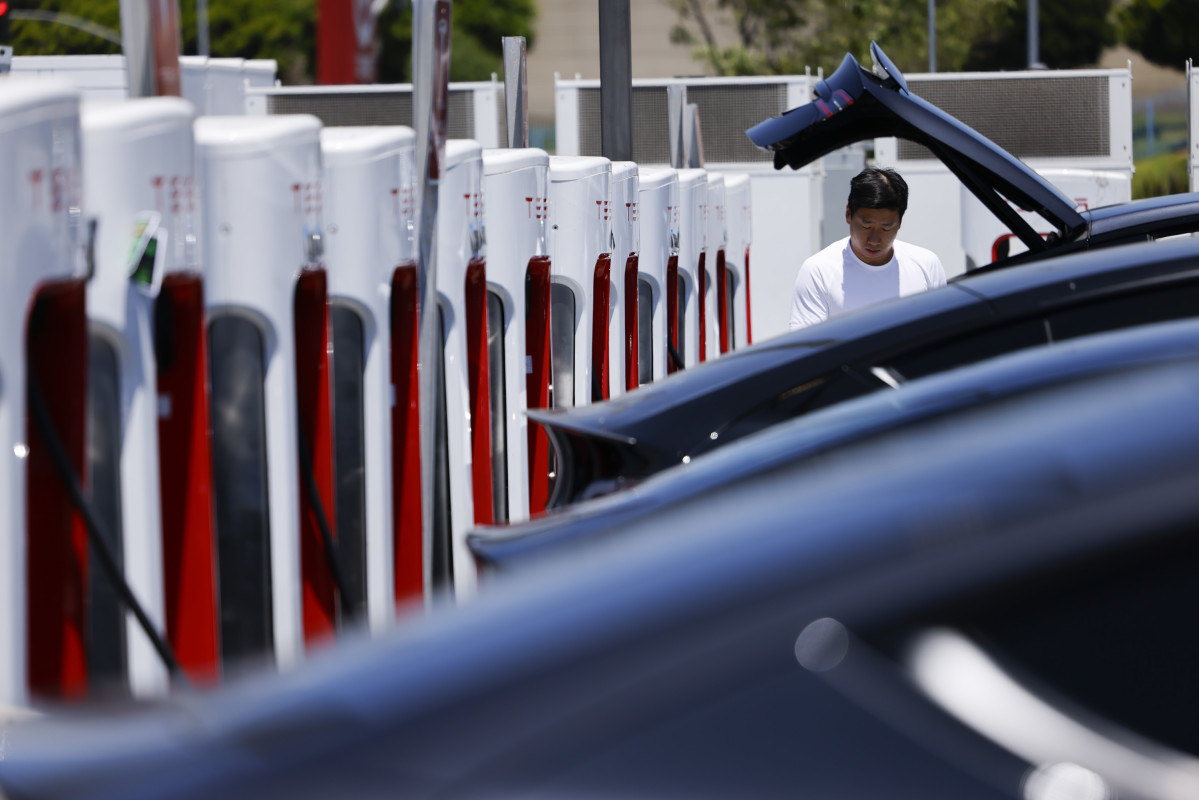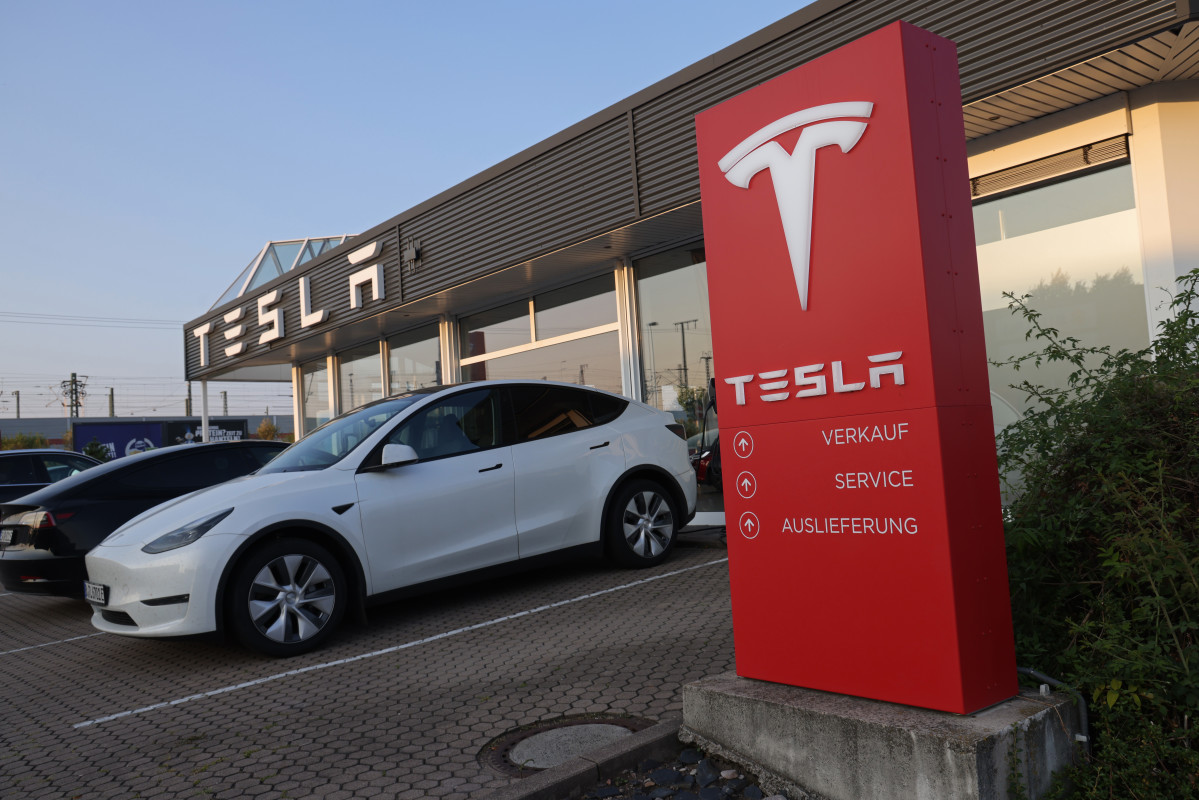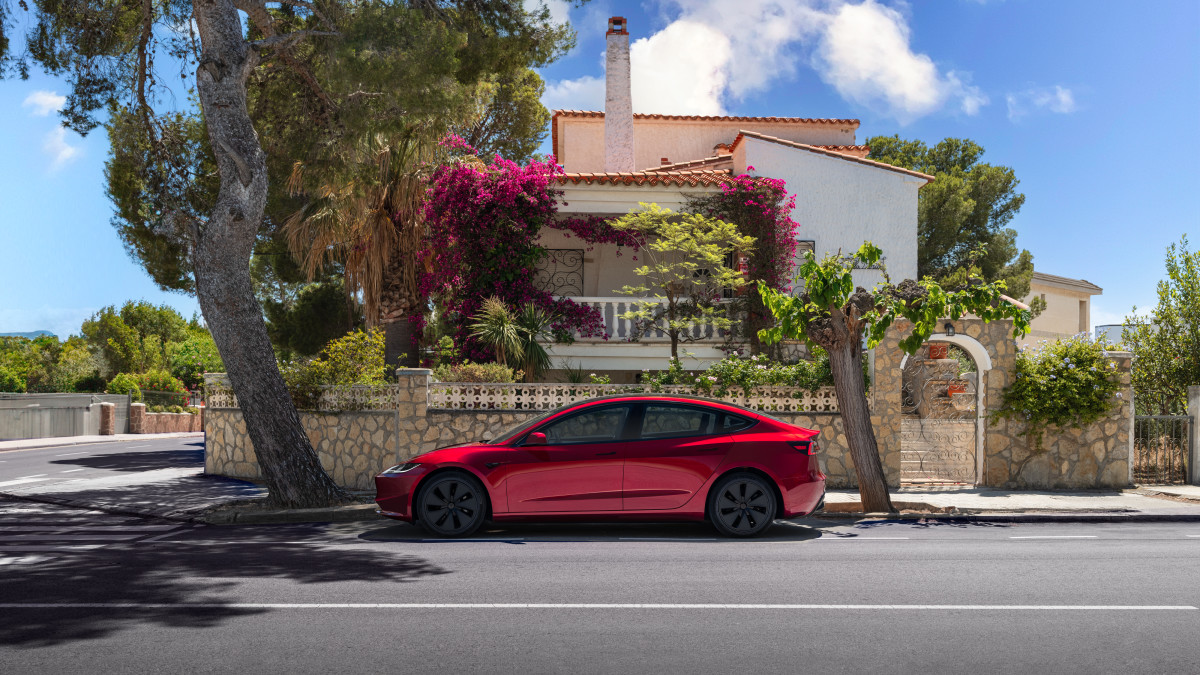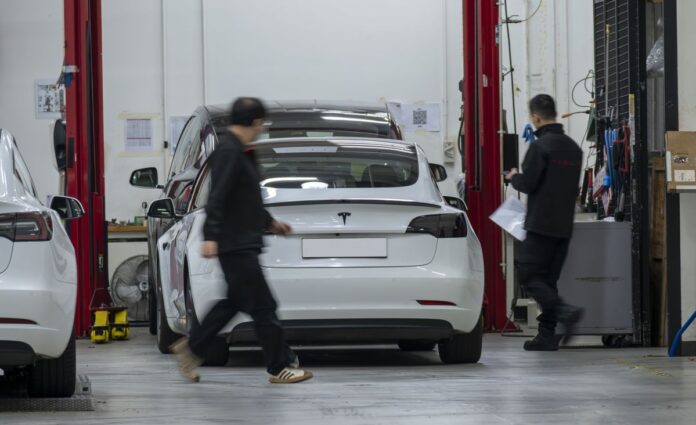Tesla is pushing back hard against the EPA
In a detailed 27-page public comment letter addressed to the Environmental Protection Agency (EPA) posted online on September 24, electric vehicle giant Tesla voiced out against the Trump administration-controlled EPA’s proposal to scrap greenhouse gas emissions rules for cars.
The company’s response comes as the EPA considers reversing its 2009 “Endangerment Finding” that classified greenhouse gases as harmful pollutants requiring regulation. However, the Elon Musk-led firm warned that ditching these regulations could seriously damage the electric vehicle industry and even hurt American companies’ competitiveness in the global market, arguing that current emissions standards are driving innovation and investment in clean vehicle technology.
Getty Images
The stakes are high for Tesla and higher for the industry
In its letter, Tesla disclosed that its business model depends on the current regulatory framework, as the company has invested billions based on the assumption that strict emissions standards would continue pushing automakers toward cleaner technologies. It noted, “Vehicle manufacturers, including Tesla, have for nearly two decades made investment decisions informed by the stable understanding of EPA’s authority to regulate greenhouse gases and adopt innovation-promoting emissions standards.”
The electric vehicle giant isn’t just worried about its bottom line; it also noted that it is worried about the American automotive industry as a whole falling behind in the global EV race. Tesla paid particular attention to the Chinese market, as companies like BYD have proven to be sales leaders in major automotive markets outside the United States.
“Other countries, and China in particular, are rapidly increasing their efforts in EV production,” Tesla warned. “[The] EPA’s Proposal would reverse the market stability that has encouraged vehicle manufacturers to invest in the technologies that are required to continue to compete in the global vehicles market.”
Getty Images
Specifically, Tesla revealed it spent upwards of “$20M to retrofit its supercharger network and at least $100M to build additional supercharging capacity to accommodate the growth of non-Tesla BEVs operating in the United States.” This investment was made specifically because Tesla expected other manufacturers to ramp up EV production to meet emissions standards.
In addition to the benefits of the EV regulations, the company highlighted some success with a smaller, but telling example of how green-centric regulations drive innovation in the industry. In 2019, Tesla switched from a standard refrigerant (HFC-134a) to a more environmentally friendly one (HFO-1234yf), a change that increased material costs by $25 per vehicle, but proved to be small potatoes in the long run.
“This investment ultimately amounted to tens of millions of dollars when scaled over millions of vehicles produced for North America since this time and would be undermined by a change in the standards,” it said.
Getty
Tesla says that the science isn’t on the EPA’s side
Tesla also flexed its American manufacturing prowess, proudly stating to the EPA that “all Tesla vehicles sold in the United States are domestically manufactured” and that the company’s supply chain reach covers more than 40 states, employing more than 70,000 workers in the U.S.
However, Tesla didn’t just make economic arguments; it also critiqued the scientific basis for the EPA’s proposed reversal, where it criticized the agency for relying on a hastily produced Department of Energy report that “was produced by five people in less than two months based upon narrowly selected materials.”
Per Tesla, more than 85 climate experts have criticized said DOE report as being “biased, full of errors, and not fit to inform policymaking.” In addition, Tesla also pointed to a new National Academy of Sciences report that concluded that “the evidence for current and future harm to human health and welfare created by human-caused greenhouse gases is beyond scientific dispute,” adding that the “EPA’s 2009 finding was accurate, has stood the test of time, and is now reinforced by even stronger evidence.”
In addition, Tesla reported in the letter that in 2024, Tesla owners helped save “nearly 32 million metric tons of CO2e” from entering into the atmosphere; a figure that it said is equivalent to the same sort of emissions that result from “driving an internal combustion engine (ICE) vehicle about 78 billion miles.”
Tesla
Tesla clarified that the EPA’s proposal faces significant legal challenges. The company argued that the Supreme Court decision in Massachusetts v. EPA has already determined the EPA’s authority to regulate greenhouse gases from vehicles. Additionally, Tesla countered the EPA’s assertion that current standards constitute an “EV mandate.” They pointed out that it is entirely possible to meet the standards without requiring more zero-emission vehicles beyond what has already been sold, although this may not be the most cost-effective approach.
Furthermore, Tesla emphasized research indicating that electric vehicles are becoming increasingly affordable, with battery prices projected to decrease by nearly 50 percent from 2023 to 2026. It also claimed that the total cost of ownership for EVs is much lower than that of comparable gas-powered vehicles when accounting for fuel and maintenance costs.
According to Tesla’s analysis, the current emissions standards are expected to yield “$85 billion” in annual benefits, which includes “$13 billion” in health benefits from reducing criteria pollutants and “$46 billion” in fuel savings.
Related: Get Ready for the Mercedes-Benz VLE: The Stylish New Electric Minivan With Surprising Range
Final Thoughts
The EPA’s attempt to repeal the endangerment finding is part of a series of actions taken under President Donald Trump to reduce federal support for electric vehicles. Boiling it all down, Tesla is telling the EPA that if “it ain’t broke, don’t fix it,” as it believes that the current regulatory framework has created the stability and incentives needed to drive innovation and keep America competitive in the global shift toward cleaner transportation.
At the same time, other car manufacturers have taken the exact opposite stance and urged the EPA to roll back the emissions regulations established during the Biden administration, arguing that these rules are “simply not achievable” in comments submitted by the Alliance for Automotive Innovation, a lobbying group that represents nearly all major manufacturers, including Detroit’s Big Three.
Related: Tesla Hit With Lawsuit in China for Failing to Deliver on Self-Driving Hype
